Roman (ruin) holiday in southern France
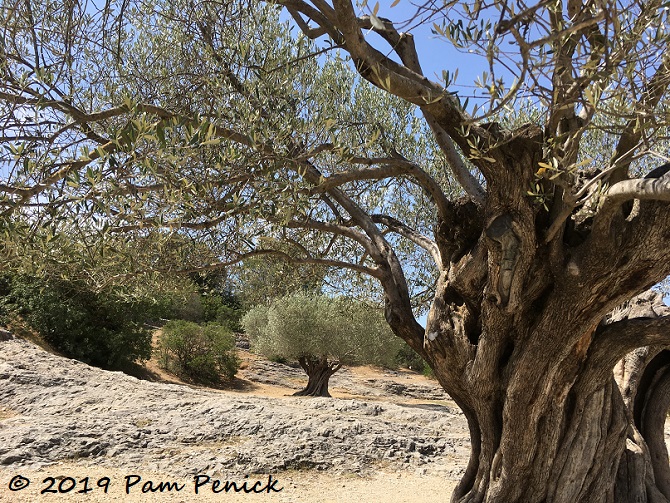
I can explore a garden or busy market all day long, but I have a low attention span for cathedrals and museums, no matter how stunning. I joke with my husband, who loves the history and culture of such spaces, that I prefer places that are alive, not dead. So when he suggested a visit to Pont du Gard, a Roman aqueduct about 30 km west of Avignon, I tried to muster some enthusiasm but am not sure it showed.
Boy, was I wrong. The place is amazing.
Pont du Gard
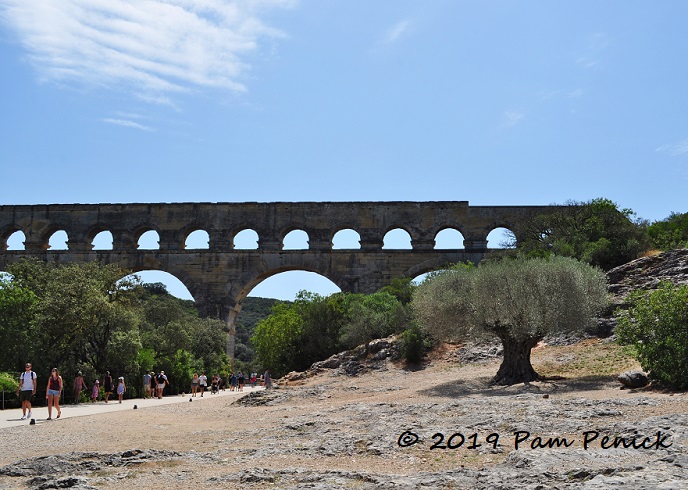
We arrived on a hot midday in early August, and there was a bit of a walk from the parking lot to the aqueduct, designed to keep cars away from the scenic views (as at Stonehenge). We stopped within sight of it for a picnic lunch under some trees, and as we devoured bread, cheese, sausage, and apricots, I admired the arched structure. And then, OH MY GOD, look at those massive olive trees!
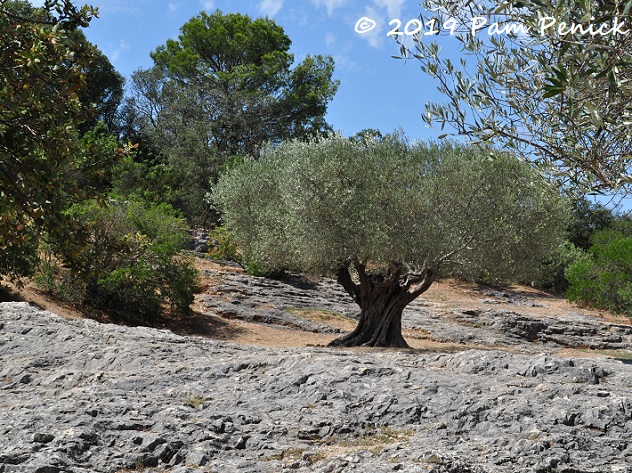
Newly re-energized, I bounded forward to admire three obviously ancient olive trees. They were gorgeous, with twisted, gnarled trunks and uplifted branches supporting a nimbus of silvery green leaves that sparkled in the sunlight.
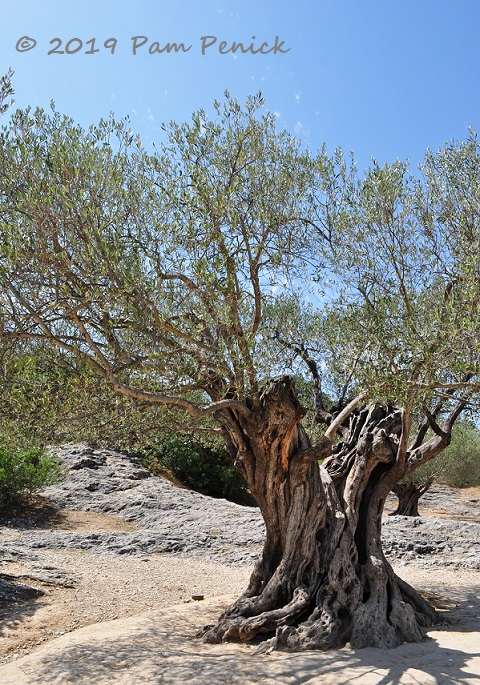
As swimsuit-clad visitors passed by on their way to the river, I stood staring at the trees’ ropy trunks, which showed evidence of hard pruning. How old were they, I wondered?
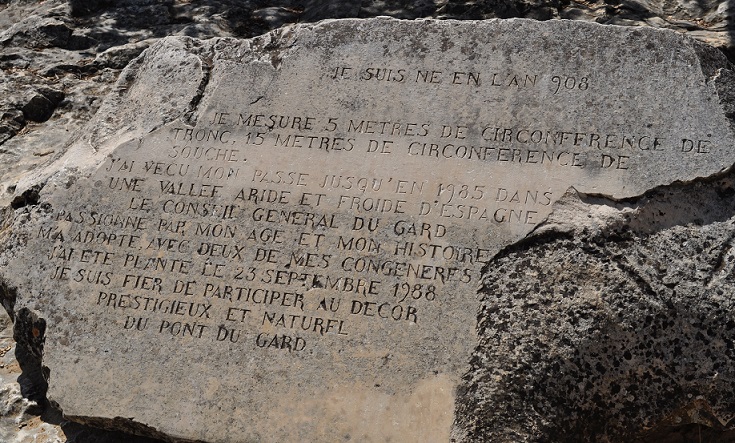
One thousand years old (!), according to a carved stone plaque that tells one tree’s story in fanciful first-person:
I was born in the year 908. I measure 5 meters [16.4 feet] in circumference around the trunk, 15 meters [49.2 feet] around the stump [the canopy?]. I lived until 1985 in an arid and cold valley in Spain. The Consul General of the Gard, passionate about my age and history, adopted me with two others of my species. I was planted here on September 23, 1988. I am proud to be part of the prestigious natural scenery at Pont du Gard.
Did I translate the gist of it correctly, French readers?
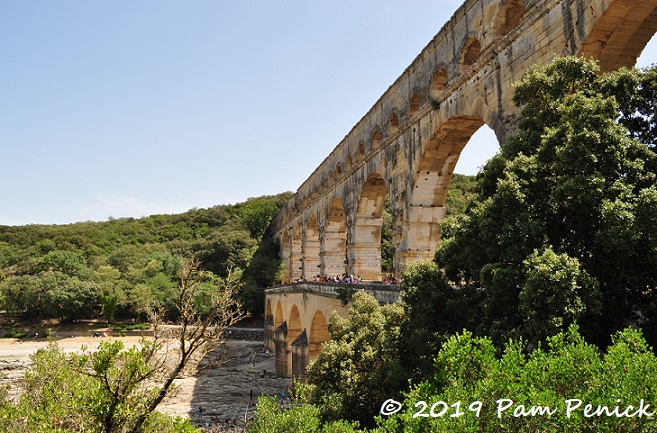
Tearing myself away from the olives, I realized the aqueduct is pretty awe-inspiring too. Built by the Romans 2,000 years ago (Provence is littered with Roman ruins), the aqueduct transported water 31 miles to a settlement that would become the city of Nîmes.
After the Roman Empire collapsed, most of the aqueduct fell into ruin. But this portion over the Gardon River was preserved through the Middle Ages by local lords who levied tolls on travelers wishing to cross. By the 18th century it had become a tourist attraction, and in 1985 it was added to UNESCO’s list of World Heritage Sites.
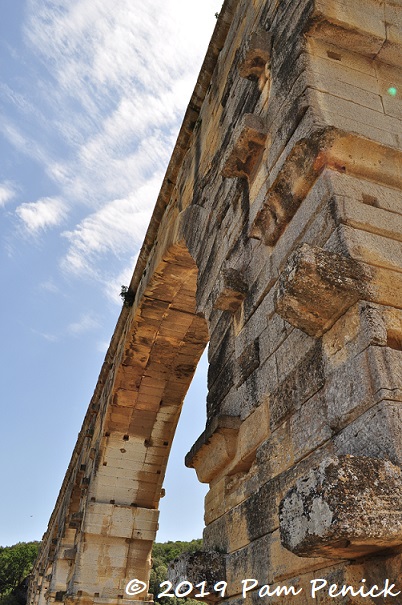
And now here I was, standing on it, looking up at massive stone blocks hoisted without cranes or modern machinery, arched and elegant and able to withstand the ravages of two thousand years of weather, traffic, and war. Those Romans could build!
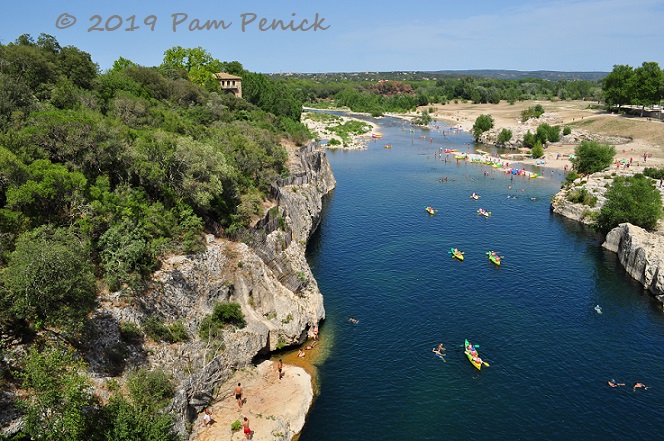
Swimmers, kayakers, and sunbathers enjoyed the river below. The limestone cliffs and blue-green water reminded me of central Texas.
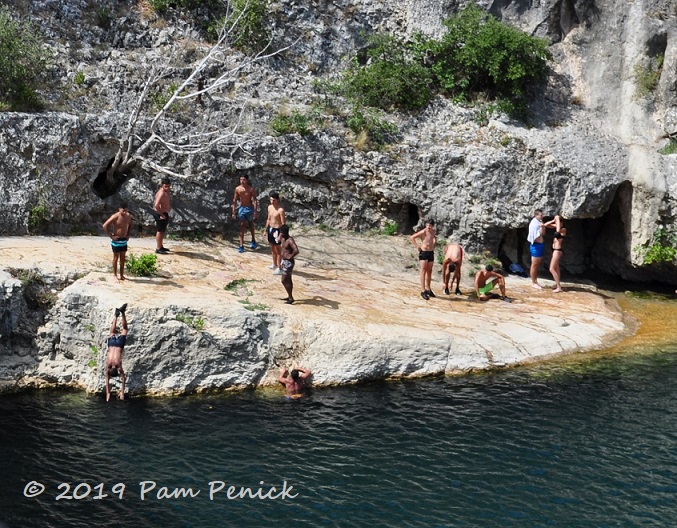
We stood on the ancient bridge and watched boys diving off a rock below, having fun in likely the same way Roman subjects did 2,000 years ago. After an hour of exploring, we visited the site’s excellent museum to view mock-ups of building methods and learn what life was like for residents of early Nîmes, who enjoyed a plethora of bathhouses supplied by the aqueduct. Water is life, as they say.
Arena of Nîmes
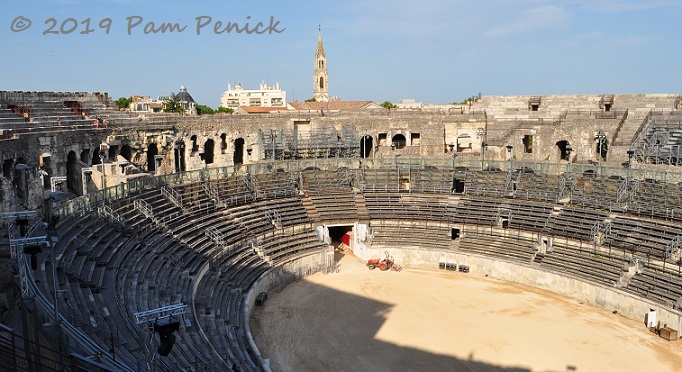
Did you know that America’s favorite fabric, denim, is derived from a fabric once made in Nîmes called serge de Nîmes (pronounced neem)? De Nîmes = denim. Just a little factoid for you. Nîmes also boasts a well-preserved and still-in-use Roman arena, which we visited just before closing. The Arena of Nîmes was built around 100 AD and seated 24,000 spectators eager to watch gladiators fight to the death against each other or wild animals.
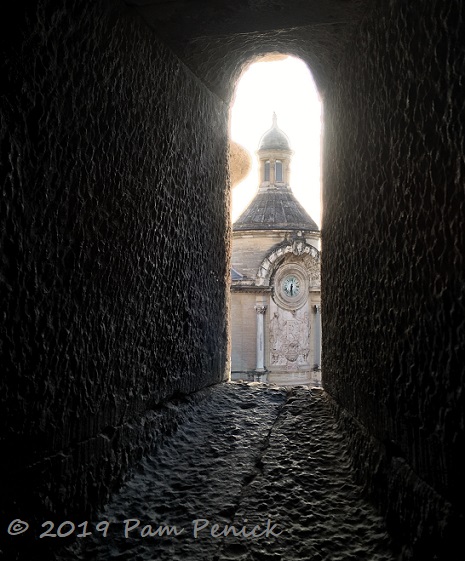
Narrow windows admit light into the interior passageways and offer framed views of the city.
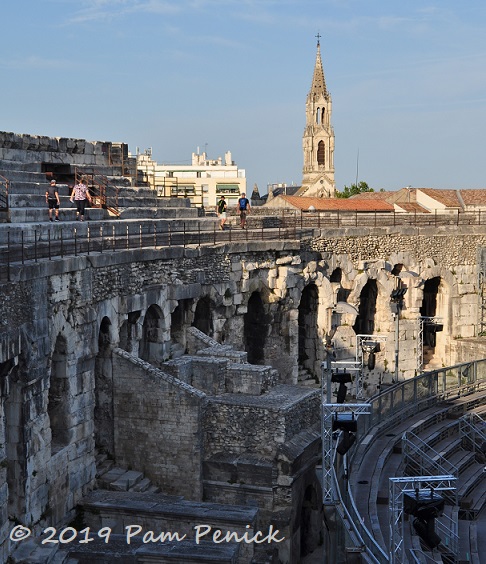
We climbed to the top and sat for a while. I begged my husband, who headed off to explore, to stand at ground level, throw out his arms, and yell up into the stands, Are you not entertained? He declined.
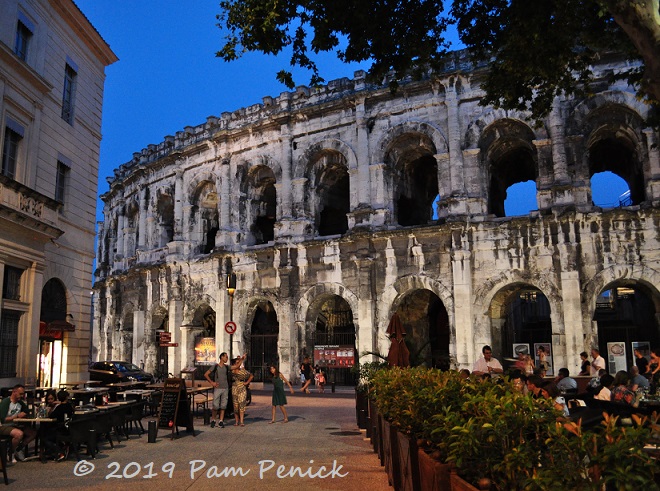
Later that evening we ate paella and burgers at a sidewalk cafe, as throngs of people passed by. It’s interesting to think that the arena has stood here for two thousand years as the city has grown around it, rising and falling and rising again, a reminder of an earlier people who probably thought they’d always be here.
Up next: A visit to Lyon and its botanical garden, my final post about our France vacation. For a look back at the scenery of Provence hill towns and limestone calanques, click here.
__________________________
Digging Deeper
Come learn about gardening and design at Garden Spark! I organize in-person talks by inspiring designers, landscape architects, authors, and gardeners a few times a year in Austin. These are limited-attendance events that sell out quickly, so join the Garden Spark email list to be notified in advance; simply click this link and ask to be added. Season 8 kicks off in fall 2024. Stay tuned for more info!
All material © 2025 by Pam Penick for Digging. Unauthorized reproduction prohibited.


I loved this post! Although like you I like touring living things like gardens, I am also fascinated by history and other cultures. I would have loved to see and touch artifacts from Roman times. I would have yelled for you.
You would?! I love that about you! 🙂
Those olives!!!
They’re olive-licious!
I hope you passed by the Temple of Diana, or La Maison Carrée, at Nîmes… Thomas Jefferson used it as his model when he designed the Virginia state capital. Both are magnificent buildings.
Alas, we didn’t see that. So many cool places to see, so little time!
Oh my goodness, Pam, what a great post. I’ll never go, but you sure made me want to. Great pictures and commentary! What a fantastic trip for you and your husband.
Thank you, Janelle! It’s a compliment anytime someone else’s vacation photos don’t put one to sleep. 😉 I totally conked out my own family once by showing them photo after photo of elephants from a trip to Africa. There is such a thing as elephant fatigue, I learned. I figure it applies to ruins too.
That is vacation magic, when everyone finds something of interest. That aqueduct is incredible — so glad it’s designated a World Heritage Site. And paella too? The perfect day…
You’re right — that’s what makes a vacation fun, when everyone gets to do/see something they’re excited about. We had many of those moments on this trip, and I’m grateful.
Hi Pam,
Wonderful writing and photos, as always. What a wonderful trip! Enjoying all your posts. À mon avis, votre traduction du français est excellente. Admittedly, however, I am rusty as my study of french language was decades ago. It’s a great story about the trees. Thank you for taking the time to translate!
Janis
Thanks for checking my admittedly rocky translation, Janis!
P.S.
I think the tree’s story really did mean to convey circumference of “de souche” >>> “stump”, probably as in the circumference of the top of the trunk from where the heavily pollarded branches originate. I suppose it could also mean the base of the trunk flare.
Ah, could be! Thanks, Janis.
Great post, Pam! About those gladiators’ deaths. At the coliseum in Rome we learned that you should think of the gladiator fights like WWE. The gladiators were sports stars of their day. They were too valuable for their promoters to allow them to be killed, so the deaths were faked.
Is that so? Interesting!
I’m loving these posts! We took almost exactly the same trip a few years ago and this is like reliving it, thanks!
How fun! I’m glad you’re enjoying the recap.
You all had too much fun. I would have liked to know if you could hear your husband while you were up high and he down low. How are the acoustics there??
I don’t know because he wouldn’t do it! 😉